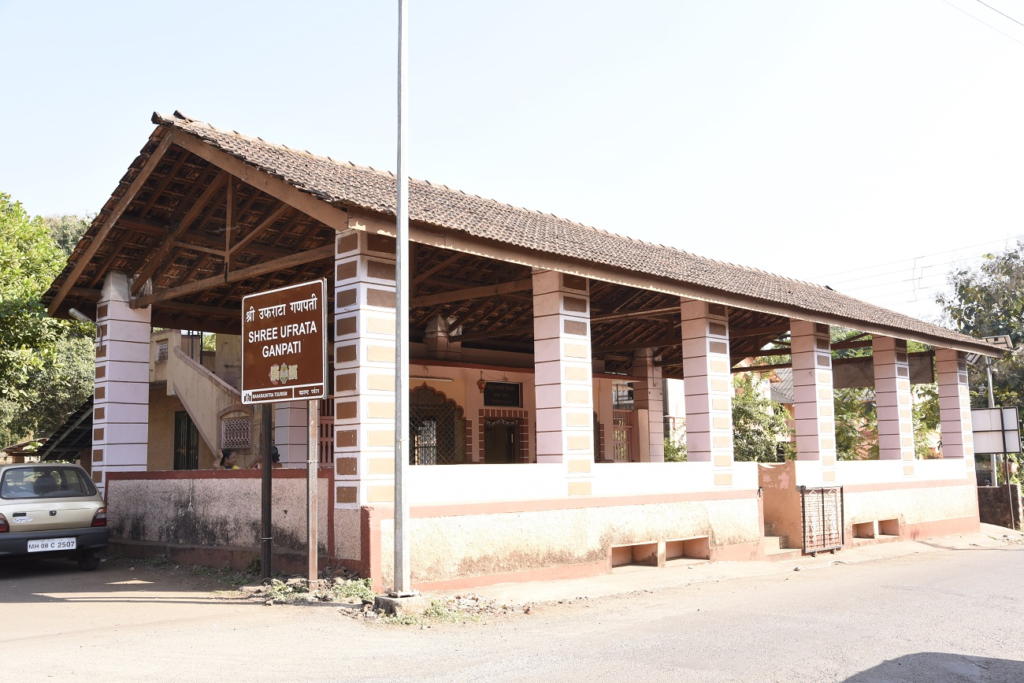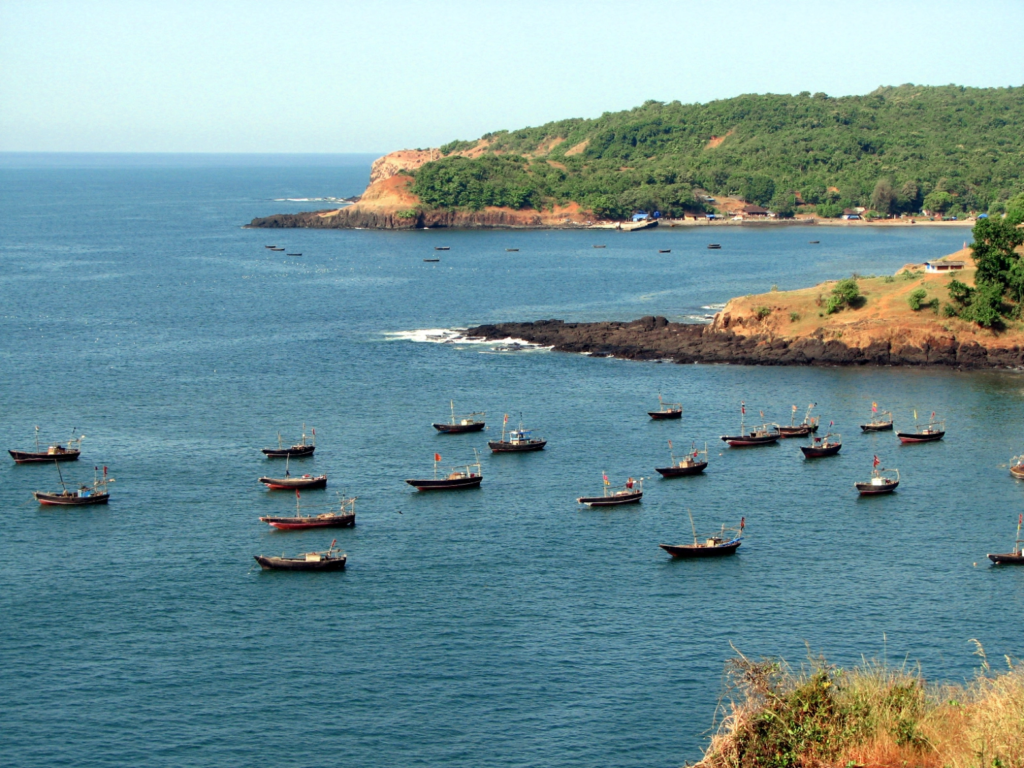Guhagar: Nature’s Retreat on Maharashtra’s Coastal Gem
Guhagar, a hidden gem in Maharashtra’s Konkan region, offers both in abundance. The town offers pristine beaches with clear waters and soft sand that are perfect for a leisurely stroll or a dip in the sea. For nature enthusiasts, there are nearby forests, forts, and waterfalls to explore. But what truly sets Guhagar apart is its mouth-watering seafood. The town is famous for its fresh catch of prawns and crabs, cooked to perfection by local chefs.
Guhagar was ruled by various dynasties, including the Mauryas, Satavahanas, and Chalukyas, before coming under British rule in the 19th century. Today, Guhagar is a peaceful coastal town that offers a perfect blend of history, culture, and natural beauty.
How do I reach Guhagar?
Rail: Guhagar is 44 kilometers from Chiplun, the closest railway station. Take the Konkan Railway to get to Chiplun. From Chiplun station, You can get to Guhagar by taxi or auto.
Road: To reach Guhagar, there is a well-connected road, and one can use public transportation or their own vehicle.
Mumbai to Guhagar – 290.5 km, 7 hours, 3 minutes, approximately.
Pune to Guhagar – 248.8 km, 6 hours, 17 minutes, approximately.
Geographical location
In Maharashtra’s Konkan range, Guhagar is a coastal settlement situated between the Vashishti River and the Jaigad Creek. The name Guhagar comes from the words Guha, which means caves, and gar, which means house, thus, the name cave house.
Let’s discover what this stunning location has to offer.
Places to Explore:
Worship Sites
Vyadeshwar temple:

Guhagar also has several ancient temples, including the Vyadeshwar temple, which is believed to be over 500 years old.
Sage Vyadi was responsible for putting the Shiva lingam in one of the Guhagar temples, which later came to be known as the Vyadeshwar Temple. The temple is renowned for its unusual Panchayatan architectural design. The Shiva lingam that Sage Vyadi placed in the Guhagar temple has become a significant symbol of Hindu worship. The temple’s history and spiritual significance make it a must-visit destination for those interested in the history of culture and religion.
Durga Devi Temple :
One of the nice seaside temples to visit in the summer and winter is this one. The area where the temple is situated is bordered by farmlands and verdant coconut plantations.
In this temple, there are four informational boards. The first board describes this temple as a Kokan’s “Shakti Peeth” and provides some background information on the temple. The other two boards describe the Goddess’s appearance, clothing, and accessories. Another name for the goddess is “Durga Vyadeshwari.” In essence, these two boards praise the Goddess’s attributes and beauty. The fourth board provides information regarding “Dhulvad,” a festival that begins before Holi.
Being a Shakti Peeth, this temple is old, and the goddess has lived here for all time. According to a legend, when Guhagar was in danger from demons, Goddess Durga manifested as Mahishasur Mardini. Guhagar was saved after she defeated the attackers and battled demons.
During the battle, a pearl from the goddess’ nose ring was misplaced close to the water. When the people of Guhagar looked for it, they discovered it on a ruyee (cotton) leaf. The pearl, which is a piece of the goddess’s jewelry, is always on display for public viewing during the Shardiya Navratra Festival along with a priceless carpet.
Shri Durga Temple is also constructed in the Panchatayan architectural style, just like Vyadeshwar Temple. “Panchatayan” refers to Lord Ganesh, Ambika Devi, God Visnu, and Lord Shiva. The Shri Durga Temple is in the center, and the corners are occupied by the temples of God Vishnu, Lord Shiv, Ganesh, and Surya The temple and its surroundings have a sacred feel and atmosphere. Your nerves are undoubtedly calmed by the serene environment, and you feel at peace.
Ufrata Ganpati temple :

A marble Ganesh idol discovered in the sea of Guhagar by fishermen is now housed in the Ratnagiri temple known as Ufrata Ganpati. The Varcha Pat in Guhagar was where the Brahmins placed the idol.
A devotee prayed to God to save the village when the sea flooded about 400 years ago. The east-facing Ganpati turned west and calmed the sea, giving it the name Ufrata Ganpati.
The temple, which is in the old Kaularu style with a wooden roof, is located about 100 meters from Guhagar Beach. The temple is situated on the road leading to Anjanvel or Veldoor, 200 meters from the bazaar.
This Ganesha is said to grant the wishes of his devotees. The white idol has a naga sutra wrapped around its belly and is shaped like a quadrilateral, holding Parashu and Trishul in each hand.
Seashore to Explore
Guhagar beach:

The main draw of Guhagar is Guhagar Beach, one of the best beaches in the Konkan. The Arabian Sea, coconut trees, and Suru trees encircle the golden-sand beach. It is one of the best sights in Konkan because of the mountains on one side and the crystal-clear sea on the other. It is a beautiful beach that is 5 to 6 kilometers long. White-bellied sea eagles soaring through the sky are easy to spot.
Guhagar Beach is 241 kilometers from Pune and 280 kilometers from Mumbai by road. The distance to Chiplun, the closest railway station, from Guhagar Beach, is about 40 kilometers.
Velneshwar beach:

From Guhagar Beach, it takes about 20 kilometers to get to Velneshwar Village and then to the beach. According to estimates, the village is 1200 years old. A stunning beach in the Konkan region, Velneshwar Beach is bordered by coconut trees and the crystal-clear Arabian Sea.
The coast is renowned for its unique characteristics, including the lovely coconut grooves that surround it and the clean beach with its thudding sea waves. Unlike other beaches, where the sand is black, this one is soft and brown.
The name Velneshwar comes from a Lord Shiva temple that is located close to the beach. The temple, which is rumored to be partially submerged in the sea, is as old as the village itself. Merumandal refers to the area that is partially submerged in the sea. The current building dates back about 400 years. The temple is dedicated to Lord Shiva.




